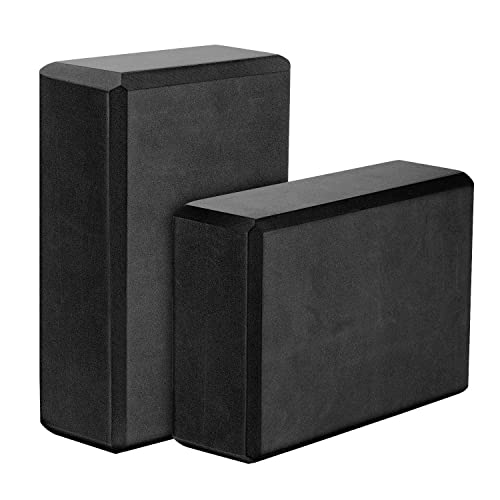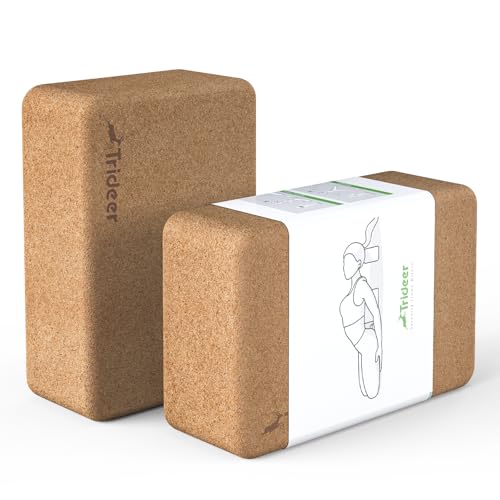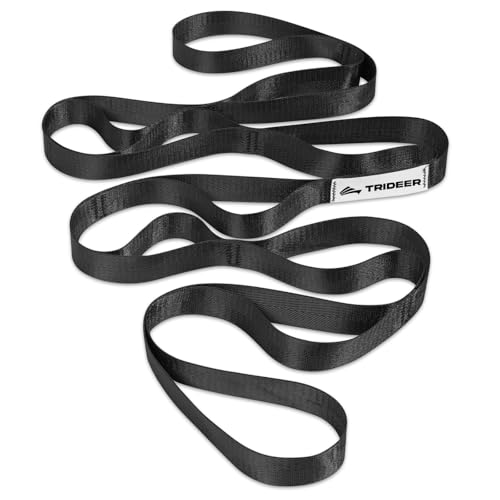If you experience an achy neck, a yoga instructor says these three moves can help ease discomfort and correct your posture
Gentle, beginner-friendly poses that also help you relax
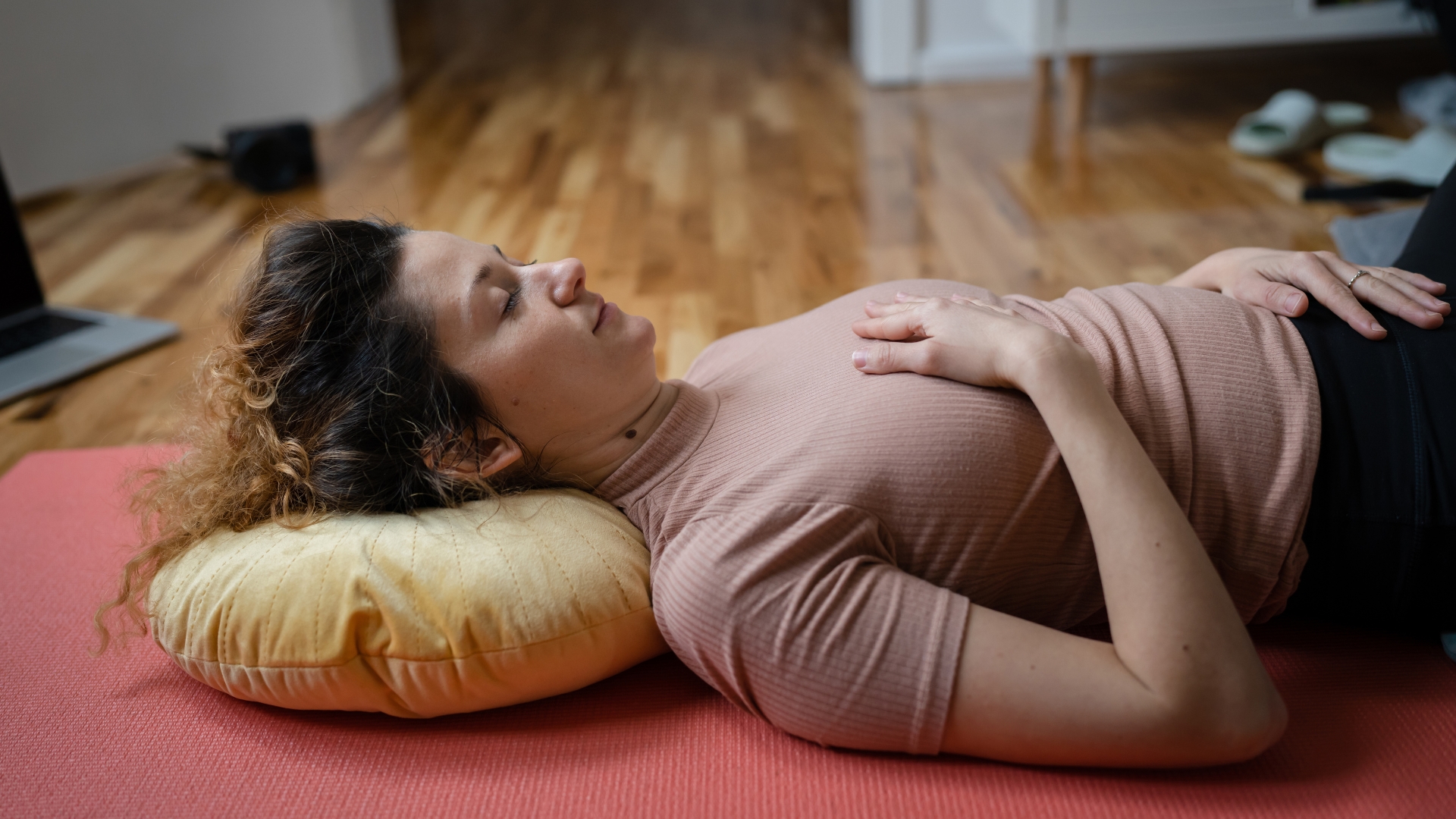
How often do you notice your shoulders creeping up toward your ears? I have to consciously remind myself to exhale, drop my shoulders and straighten my spine several times a day.
Plus, the more stressed I am, the higher my shoulders seem to rise, until I’m sitting hunched at my desk like a chilly, puffed-up bird, wondering why my neck feels sore.
All that tension has to go somewhere, and for many of us, the neck seems to bear most of the strain. Yoga can be a powerful way to counteract stress and ease discomfort as it works on a physical and mental level.
Veronique Ory, a yoga instructor who has been guiding students for over a decade through her Shine platform and retreats, explains to Fit&Well why neck pain is a common issue and how yoga can help.
“Neck pain often arises from a combination of posture, stress and lifestyle. In our increasingly sedentary world, our shoulders tend to round forward, and the head drifts ahead of the spine,” says Ory.
“Many forms of neck discomfort stem from modern habits, such as long hours at a computer, driving or looking down at a phone—all of which pull your head forward. Yoga can help retrain this alignment.”
Ory explains that this head-forward posture can eventually cause chronic strain in the upper back, neck and even jaw.
Start your week with achievable workout ideas, health tips and wellbeing advice in your inbox.
“Even subtle habits like clenching the teeth, shallow breathing or carrying emotional tension can contribute,” says Ory. “Gentle yoga practices that focus on awareness and release can help restore balance, poise and energy flow through the upper body.”
Ory has chosen three gentle postures designed to bring awareness and balance into your body and breath, without exacerbating pain. She’s also incorporated extra support, so have a block, cushion and yoga strap ready.
1. Supported savasana
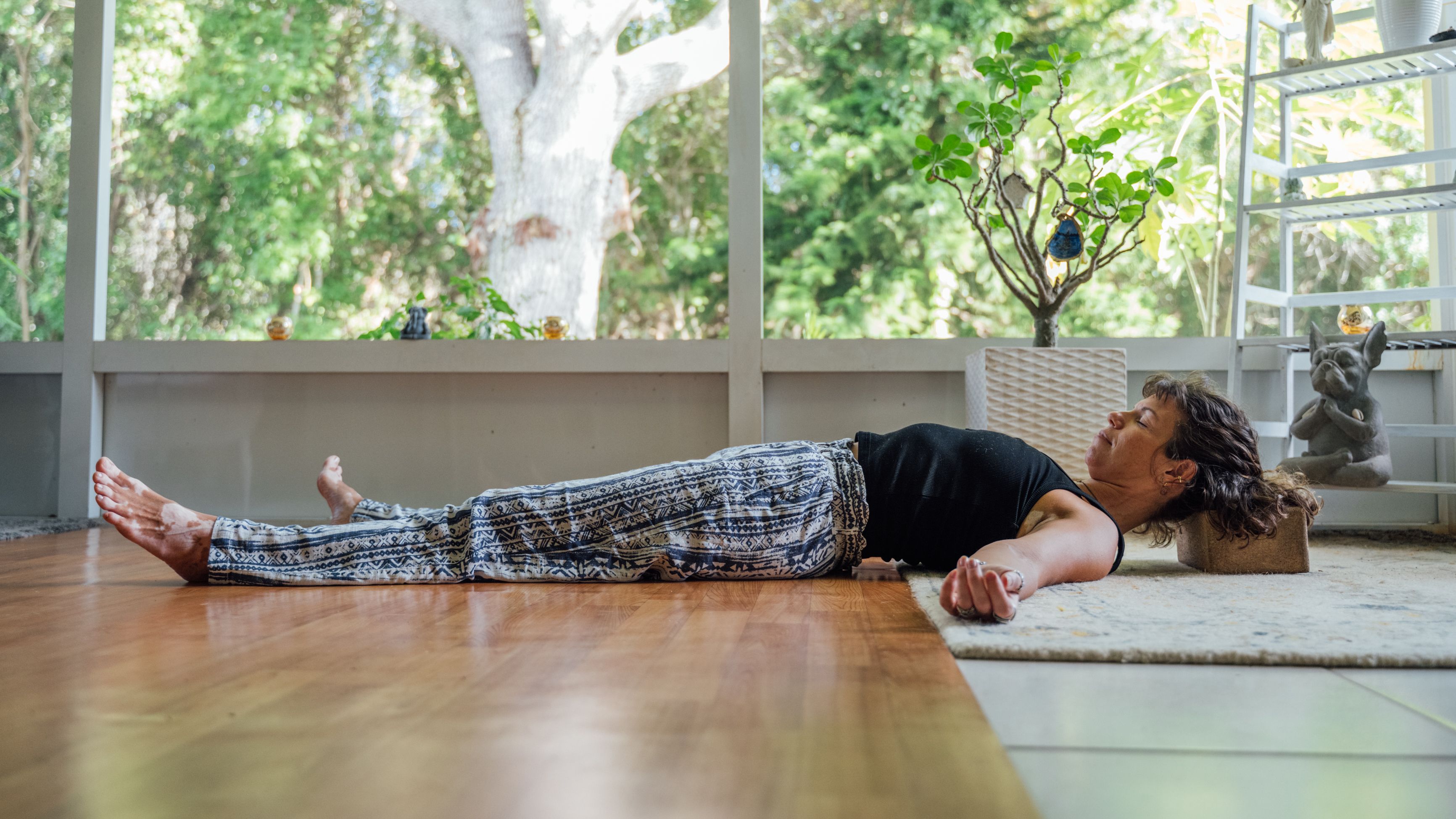
Time: 1-2min
“When we lie flat on the floor, the natural curve of the cervical spine can leave the back of the head slightly elevated or unsupported,” says Ory. “Placing a block under the head supports this curve and helps align the neck more neutrally.”
“This gentle support can ease tension in the shoulders and upper back while encouraging the nervous system to relax.”
How to do it:
- Lie on your back, with your knees bent or legs extended.
- Place a yoga block under your head, not neck.
- Soften your jaw and gently rock your head from side to side, exploring small motions.
- Pause and breathe into areas where you feel tightness or a release.
2. Sphinx with forehead support
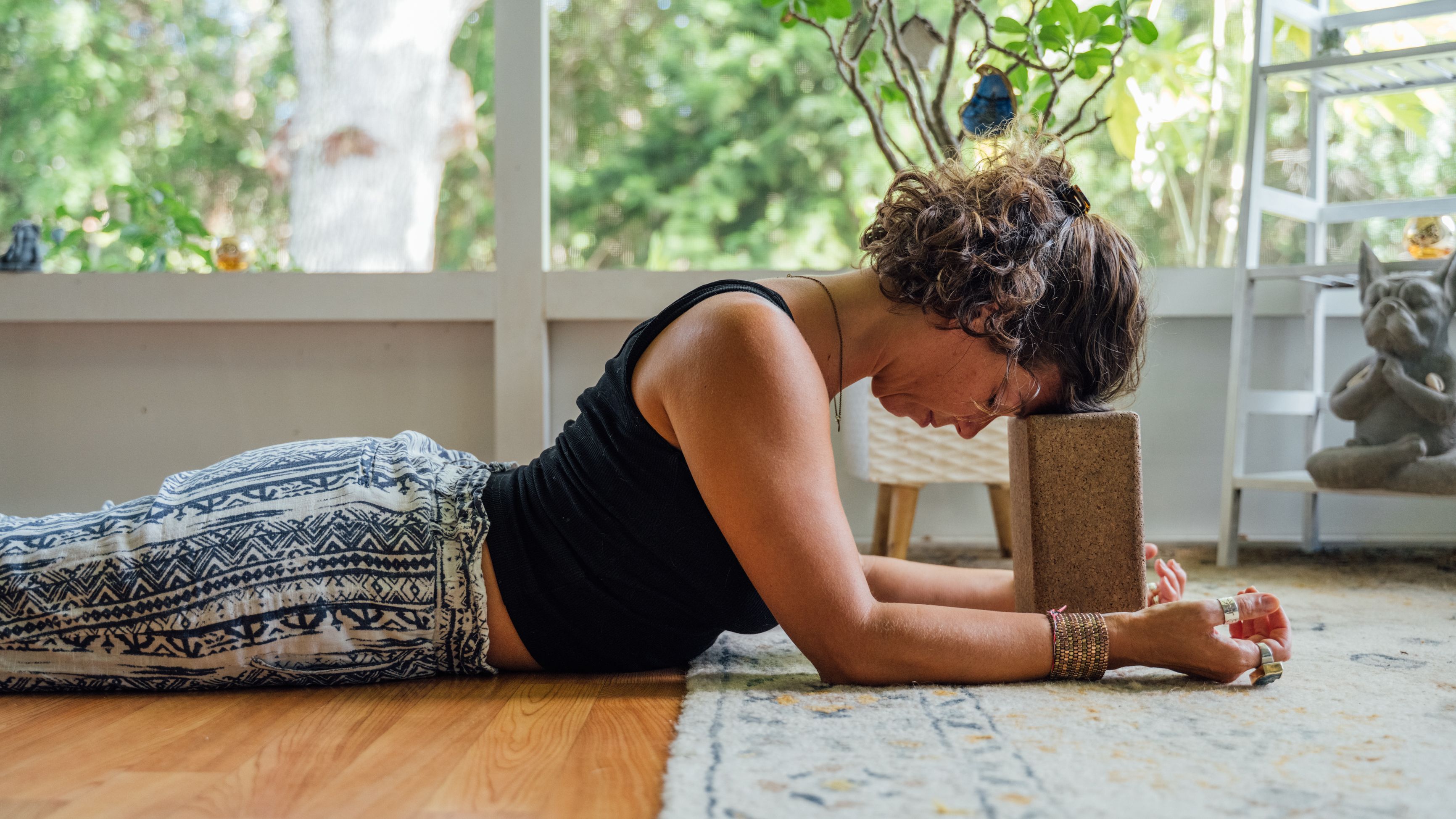
Time: 5-10 breaths
“Sphinx pose offers a subtle backbend that lengthens the front body and releases tightness through the neck and chest,” says Ory.
“Placing a block beneath the forehead creates a grounding counterpose to savasana, offering both support and gentle spinal decompression. It’s especially soothing for those who hold tension in the jaw or brow.”
How to do it:
- Lie on your front with your forearms on the floor and elbows under your shoulders.
- Place a block under your forehead so the ridge of the block rests near your eyebrows.
- As you breathe, feel your body in contact with the floor and the gentle extension in your spine.
3. Seated neck release
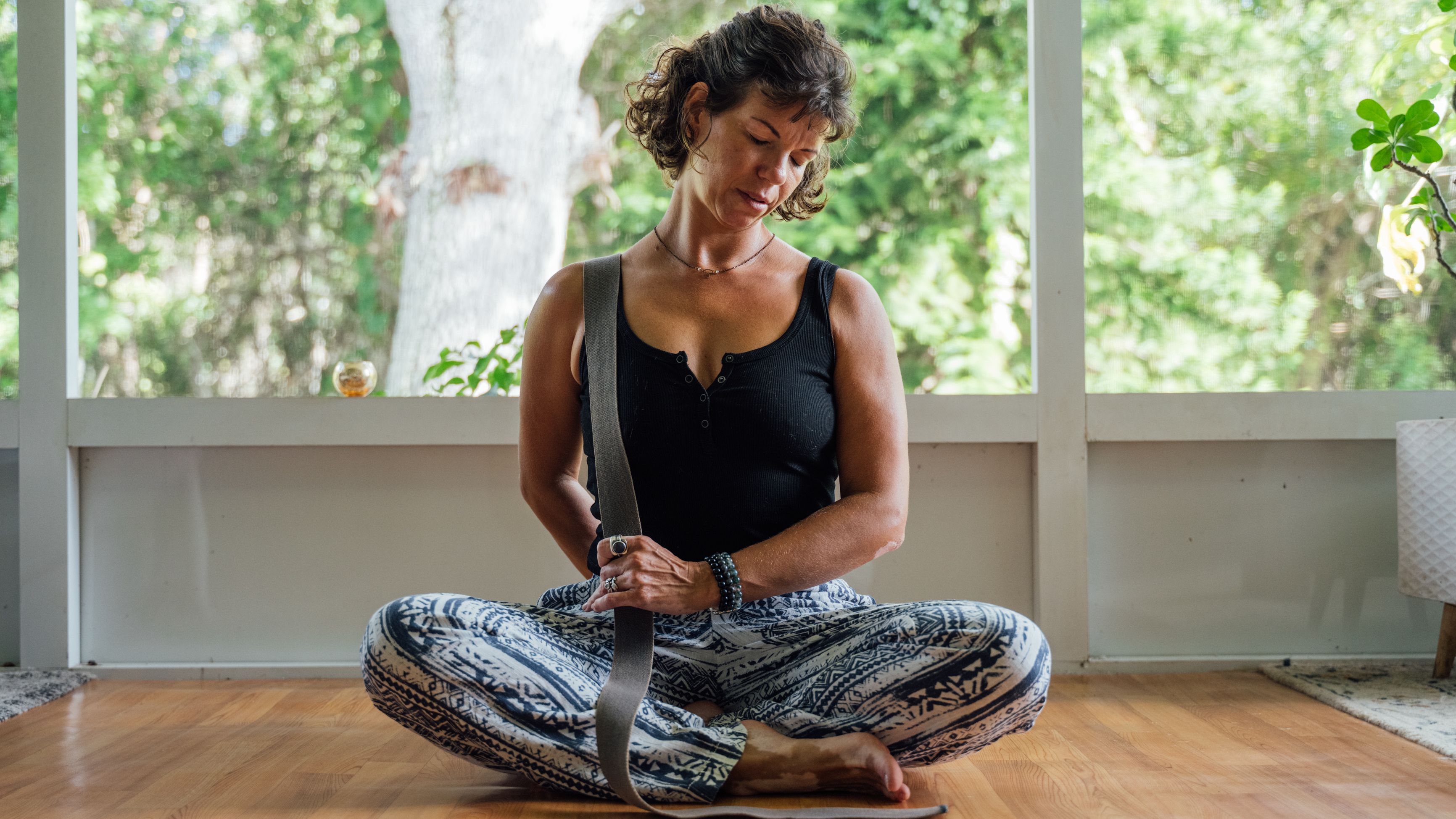
Hold: 5-10 breaths each side
“This seated variation helps relieve tension in the trapezius muscles and along the sides of the neck, which are common areas of strain from driving, phone use or working at a computer,” says Ory.
“Using a yoga strap (alternatively, a belt or tie) offers decompression and support while gently improving neck mobility.”
How to do it:
- Sit upright and drape the strap over your right shoulder.
- Take hold of the ends of the strap around waist height—using your right hand to hold the end behind your back and your left hand to hold the end in front of you.
- Gently pull down on both ends of the strap.
- Release your left ear toward your left shoulder, taking small side-to-side nods or partial circles.
- Hold for five to 10 breaths, then switch sides.
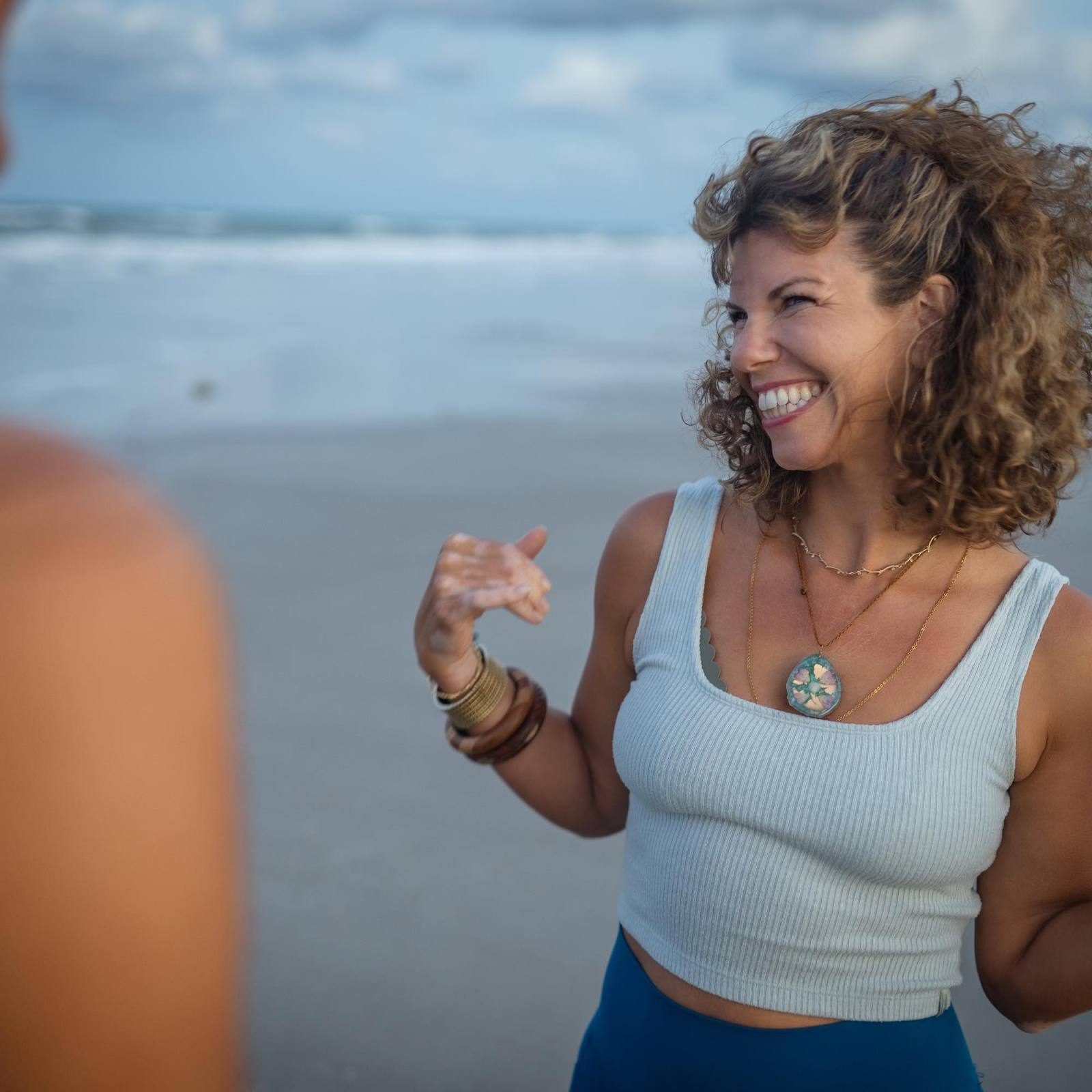
Veronique Ory is an international yoga guide, retreat leader, and author of Shine On & Off the Mat. Originally from Montreal, she’s now based in Florida and teaches both virtually and in person around the world. Her approach blends creative movement, poetic storytelling, and mindful somatic practices rooted in longevity and joy.
Shop yoga accessories

Lou Mudge is a Health Writer at Future Plc, working across Fit&Well and Coach. She previously worked for Live Science, and regularly writes for Space.com and Pet's Radar. Based in Bath, UK, she has a passion for food, nutrition and health and is eager to demystify diet culture in order to make health and fitness accessible to everybody.
Multiple diagnoses in her early twenties sparked an interest in the gut-brain axis and the impact that diet and exercise can have on both physical and mental health. She was put on the FODMAP elimination diet during this time and learned to adapt recipes to fit these parameters, while retaining core flavors and textures, and now enjoys cooking for gut health.
You must confirm your public display name before commenting
Please logout and then login again, you will then be prompted to enter your display name.

